Growing cannabis is rewarding, but spotting male plants too late can ruin your entire harvest. I’ve made that mistake before missing one early-stage male plant cost me weeks of effort and turned great-looking buds into seedy, weak smoke. The good news? You can avoid that with the right knowledge.
In this guide, I’ll show you how to identify male cannabis plants early using clear, proven signs like pre-flowers and pollen sacs. These methods come from years of hands-on growing, not theory or guesswork.
We’ll cover what to look for, when to look, and how to act fast without damaging the rest of your crop. You’ll get practical, easy-to-follow tips to stay ahead. By the end, you’ll know exactly how to spot male plants and remove them in time to keep your grow healthy and high-quality.
When and Where Cannabis Plants Show Early Male Signs
Knowing when and where to look for male signs can save your entire cannabis crop from accidental pollination.
Critical Timeline for Detection
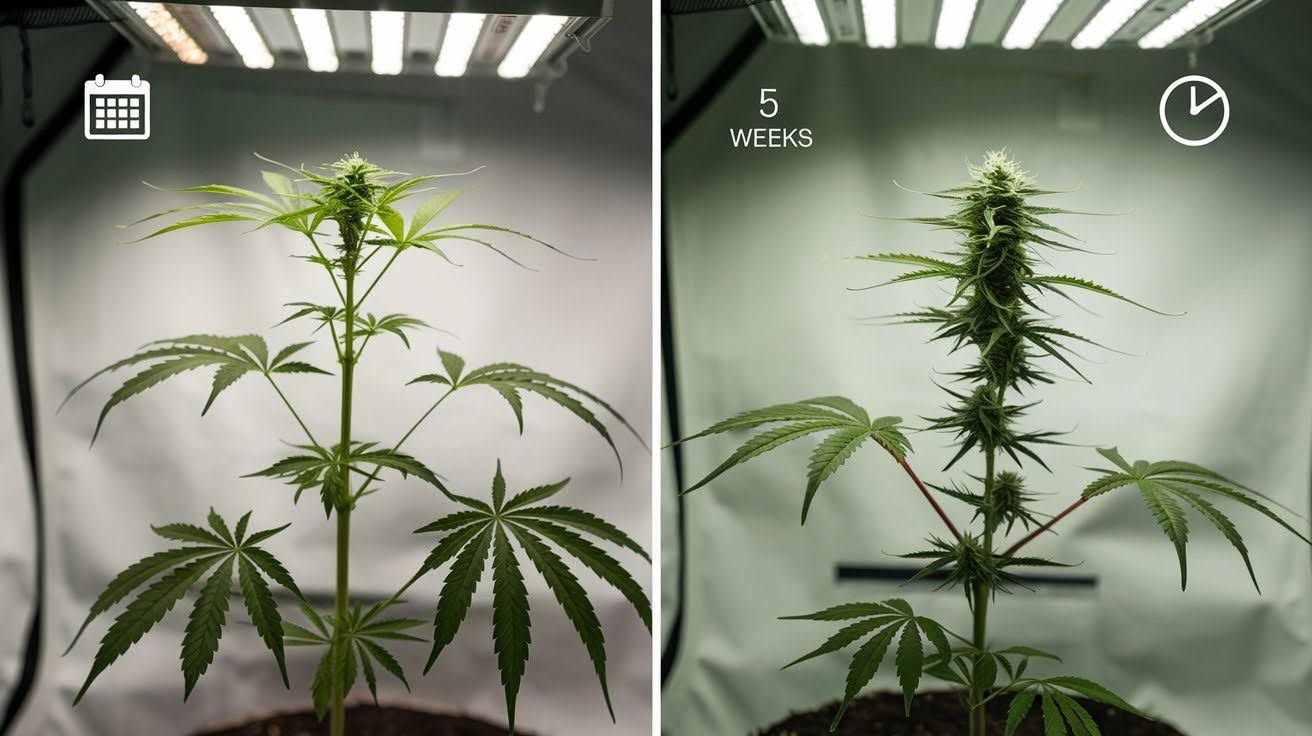
Timing is everything when it comes to catching male plants. Your cannabis plants start showing their sex during the pre-flowering stage, which kicks in around 3-6 weeks after germination. But here’s what most growers don’t know: male plants reveal themselves earlier than females.
Males typically show their sex at 3-4 weeks from germination. That’s your window. Indoor plants? Males show up 7-10 days before females.
Outdoor grows give you even more time – males appear roughly 3 weeks earlier than their female counterparts. This head start is your advantage. Use it.
Where to Look for Early Signs
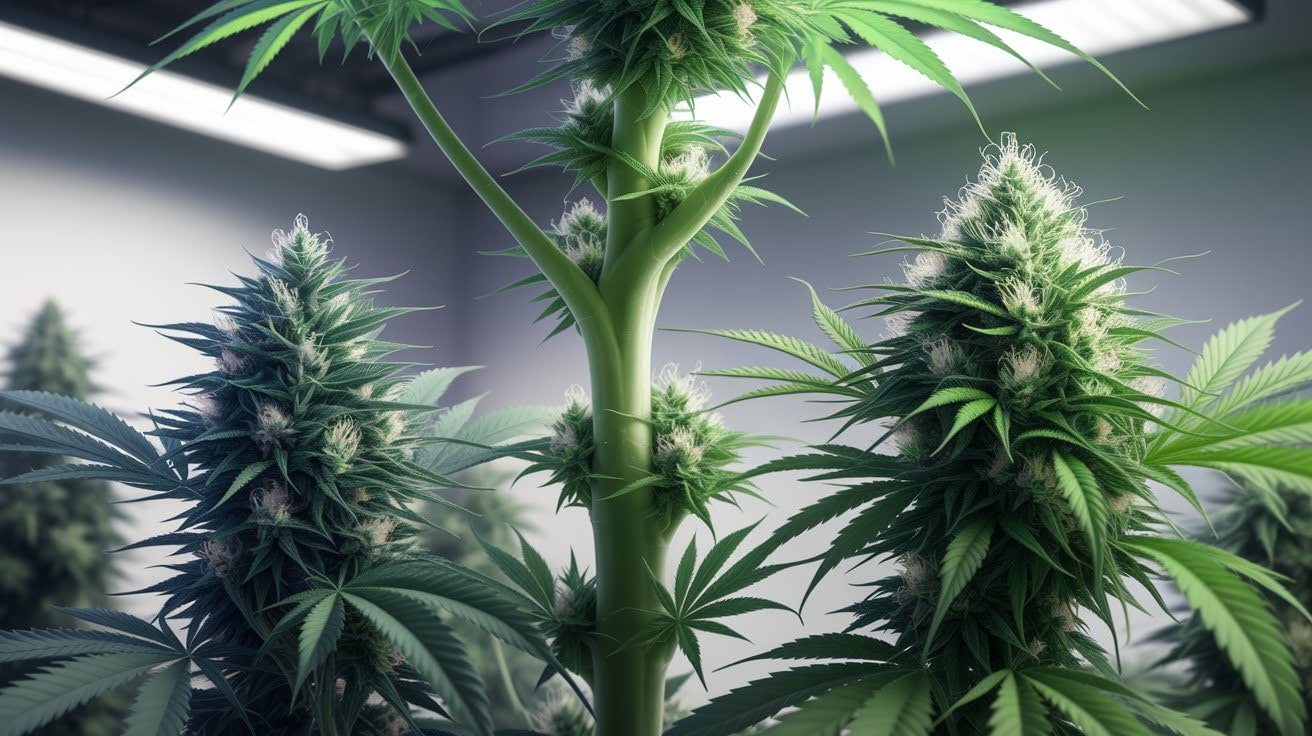
I always start my inspections at the nodes – those spots where branches meet the main stem. That’s where you’ll see the first hints of plant sex. Focus on these key areas:
The upper parts of your plant get more light, so they develop faster. Check there first. Look at the base of leaves and branch junctions too.
Here’s something important: early signs might only appear in one location initially. Don’t assume the whole plant is showing its sex yet. I’ve seen growers miss males because they only checked one spot.
Check multiple nodes on each plant. The signs start small and localized before spreading. Start looking at week 3. Check daily after that.
Physical Growth Patterns That Signal Male Plants
Male cannabis plants show distinct growth patterns that differ from females, giving you early clues about their gender.
Distinctive Growth Characteristics

Male plants grow differently from day one. I’ve noticed that males tend to stretch upward faster than females. They get taller and lankier while females stay more compact and bushy. Here’s what to watch for:
Males develop thicker, sturdier stalks to support their extra height. This makes sense – they need that strength to hold up their weight. During the vegetative stage, males also grow faster initially.
They’re in a hurry to mature and spread pollen. But here’s the trade-off: fewer leaves and less bushy growth. While females pack on foliage, males stay leaner.
Structural Warning Signs
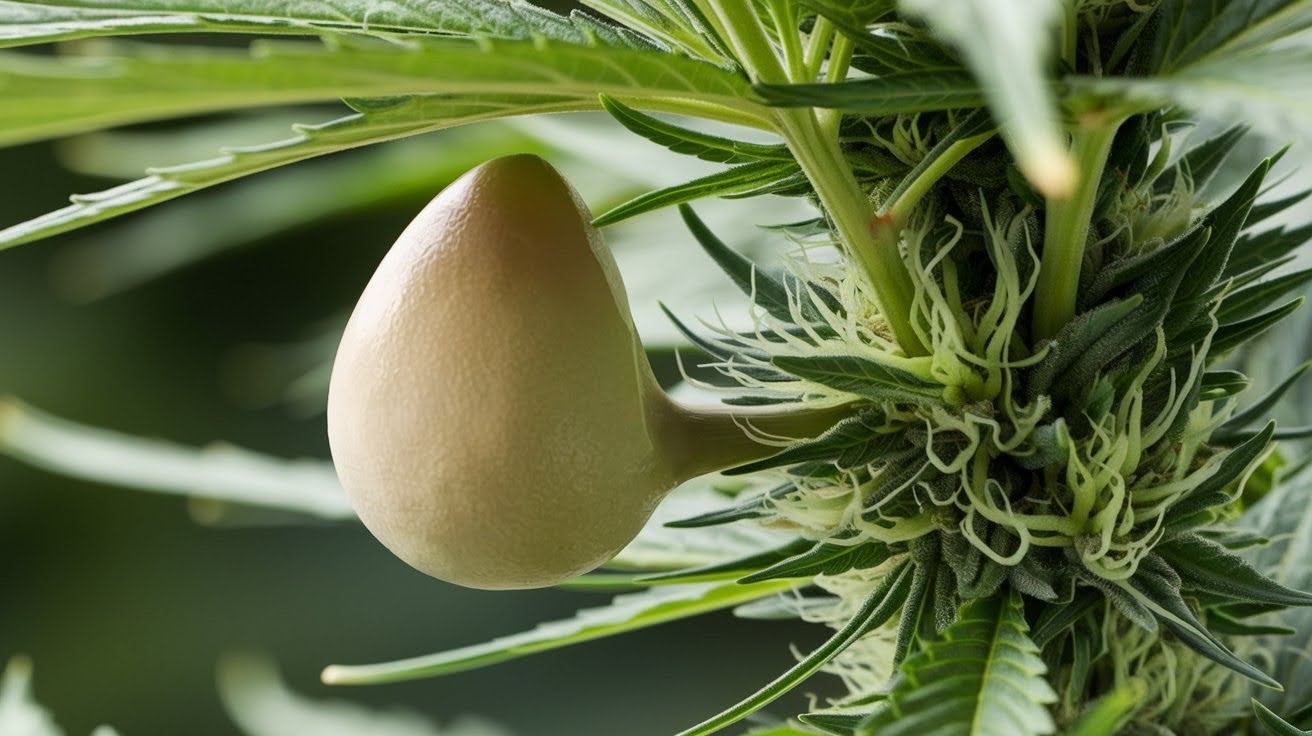
Pay attention to these early indicators: Stem thickness tells a story. Males often have noticeably thicker stems compared to females of the same age.
Height differences become obvious around week 3-4. If one plant is significantly taller, it might be male. The overall plant shape looks different, too. Males have a more open, sparse structure, while females grow dense and compact.
I always compare plants side by side. The contrast becomes clear when you look at the whole group. Remember: These are warning signs, not definitive proof. You still need to check for actual male parts to be certain.
Identifying Male Pre-Flowers – The Primary Early Signs
Male pre-flowers are the most reliable early indicators of plant gender, appearing weeks before full pollen sac development.
What Male Pre-Flowers Look Like
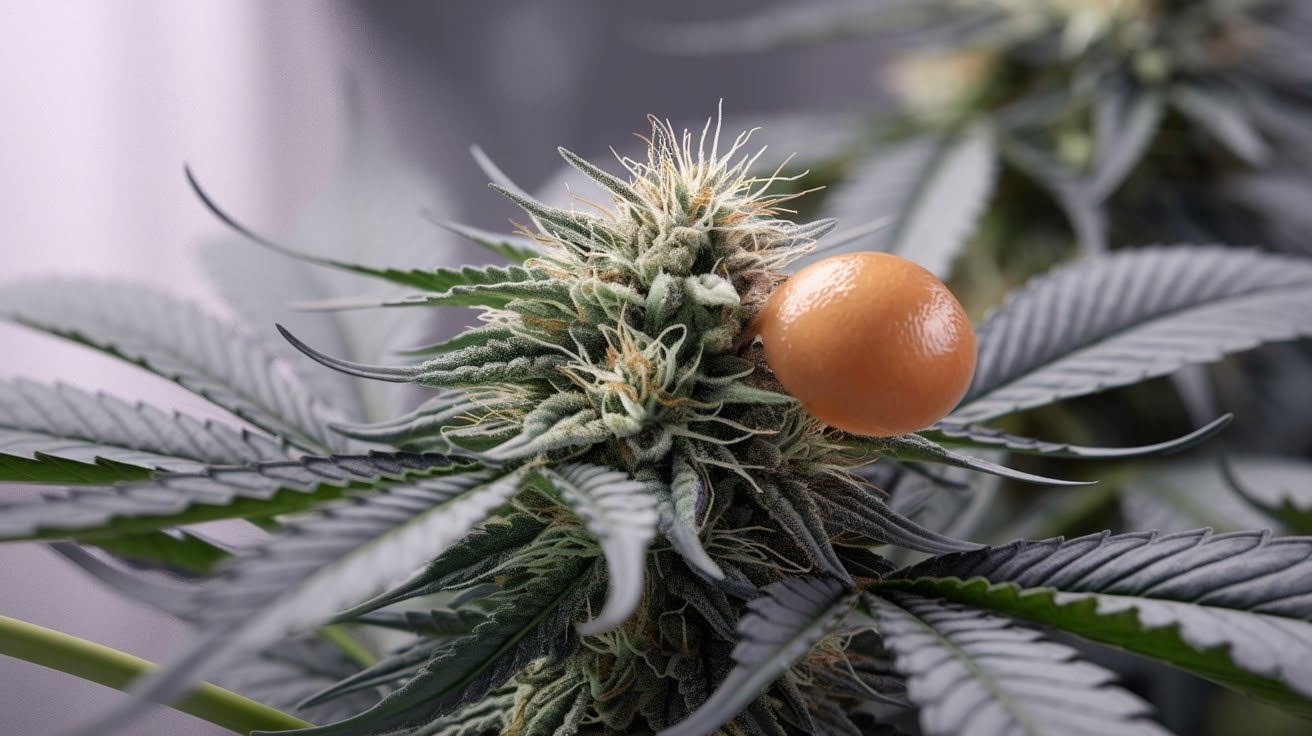
This is where it gets real. Male flowers are small, round, and egg-shaped. They appear at the nodes where branches meet the main stem.
I always tell growers to think of a spade from a deck of cards. That’s the shape you’re looking for. Key features to spot: The surface is smooth – no hair-like stuff sticking out.
This is crucial because female flowers have white hairs called pistils. Size matters here. These structures are tiny. You’ll need to get close or use a magnifying glass.
They have a bulbous appearance that’s completely different from females. Think of small balloons attached to the plant. No white hairs = potential male.
Key Visual Characteristics
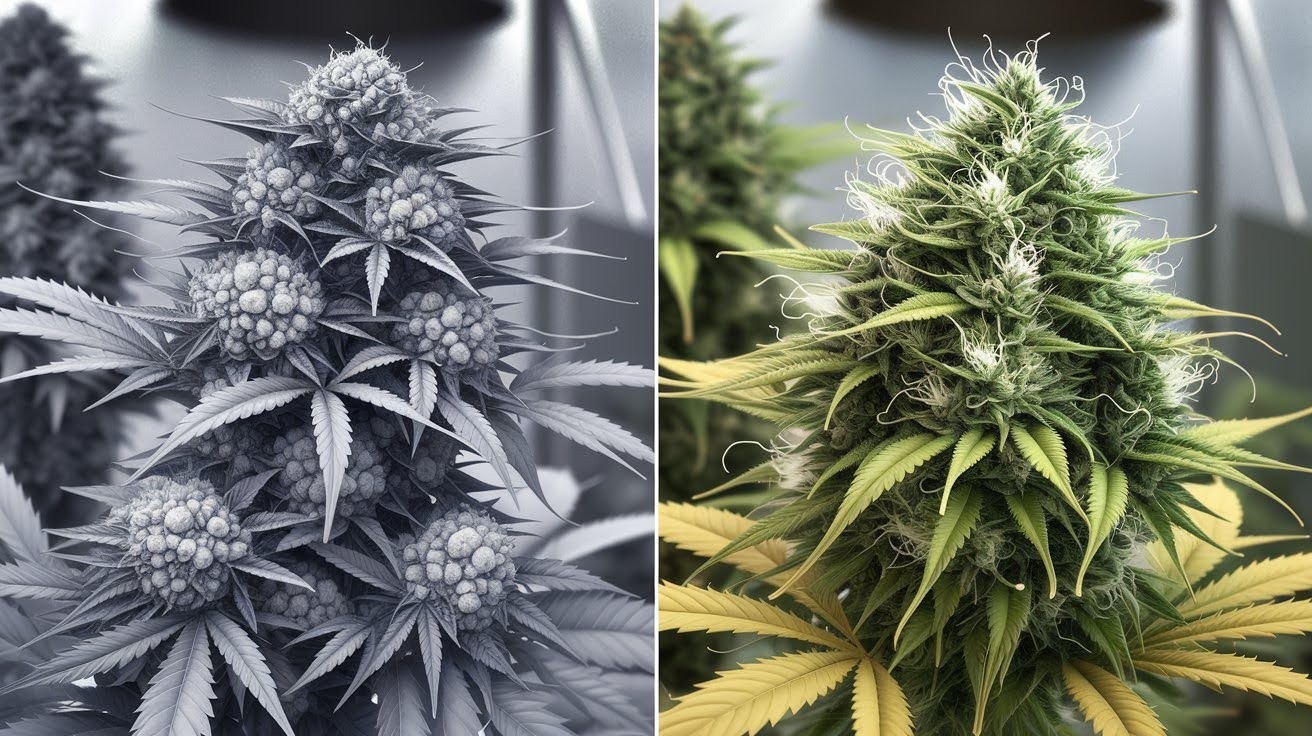
Here’s what separates males from females: Males have zero white pistils. Females always have those white, hair-like structures poking out.
Look for small stems or stalks supporting these pre-flowers. They dangle like tiny lanterns.
The formations are solid and ball-like. Female structures are more pointed and open.
Most important: Males develop in clusters at branch intersections. You’ll see multiple pre-flowers grouped. I’ve seen growers confuse new leaf growth with pre-flowers. The difference is clear once you know what to look for.
Female pre-flowers are teardrop-shaped with white hairs. Male flowers are round balls without hairs. Check every node. One male can ruin your entire crop.
Progression from Pre-Flowers to Pollen Sacs
Understanding how male pre-flowers develop into pollen sacs helps you time removal before pollination becomes a threat.
How Male Pre-Flowers Develop

Male pre-flowers don’t stay small forever. Those tiny egg-shaped structures I mentioned? They grow into full pollen sacs within 1-2 weeks of first appearing.
Here’s the progression: The small pre-flowers get bigger and more obvious each day. What started as tiny bumps became visible sacs.
Over time, they develop into grape-bunch clusters. Multiple sacs group together at each node.
The visual changes are dramatic. Round balls become hanging sacs that look ready to burst.
I always watch for this cluster formation. It’s a dead giveaway that you’re dealing with a male plant.
Critical Warning Signs Before Pollen Release
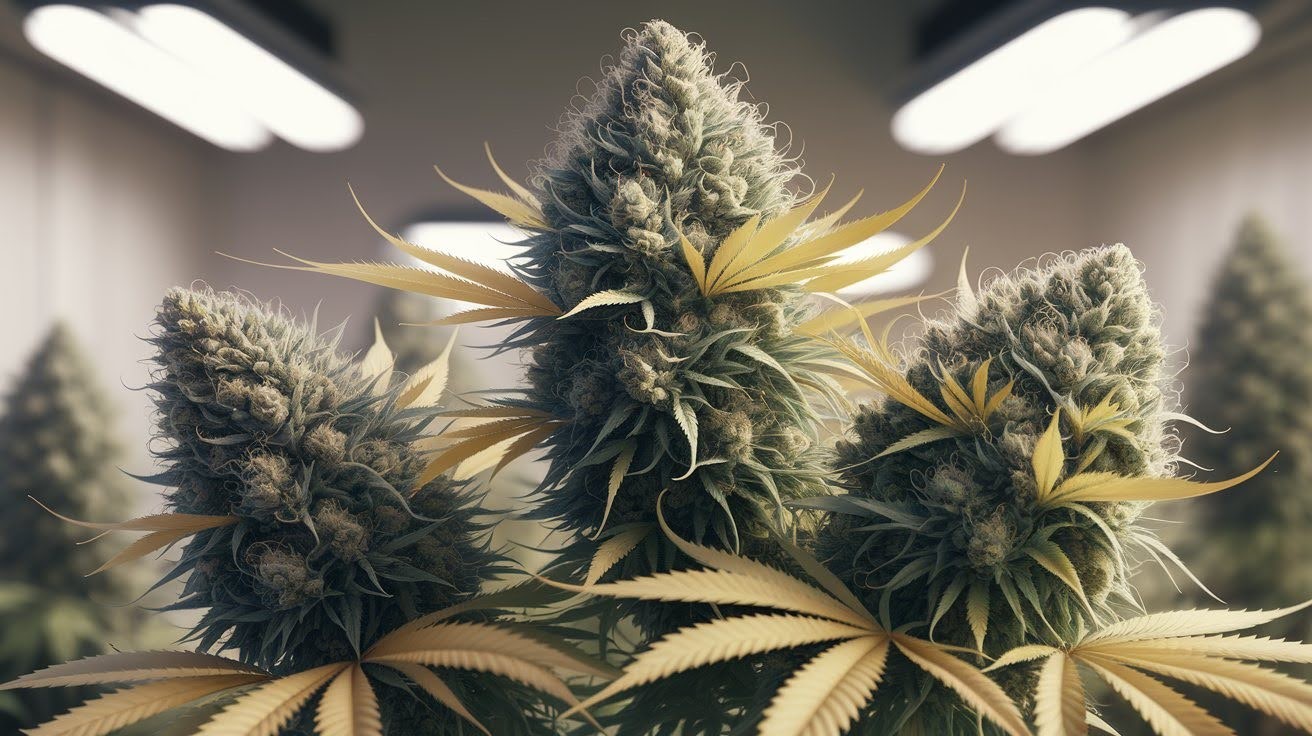
This is your last chance to act. Watch for these final warning signs: Pollen sacs start turning upright instead of hanging down. They’re getting ready to open.
Color changes tell the story. The sacs develop yellowish or cream-colored petals that peek out. Size increases dramatically. You won’t need a magnifying glass to see them anymore.
Here’s the scary part: Once you see those yellowish petals, pollen release is hours away. I’ve learned this the hard way. Don’t wait for “just one more day” to remove suspected males.
Act fast when you see:
- Upright sacs
- Yellow or cream colors
- Obvious size without magnification
Remove the plant immediately. Even a few pollen grains can fertilize your entire crop. Better safe than sorry – that’s my rule with suspected males.
Visual Identification Tools and Techniques
The right tools and inspection methods make identifying male plants faster, more accurate, and less stressful for growers.
Essential Tools for Accurate Identification
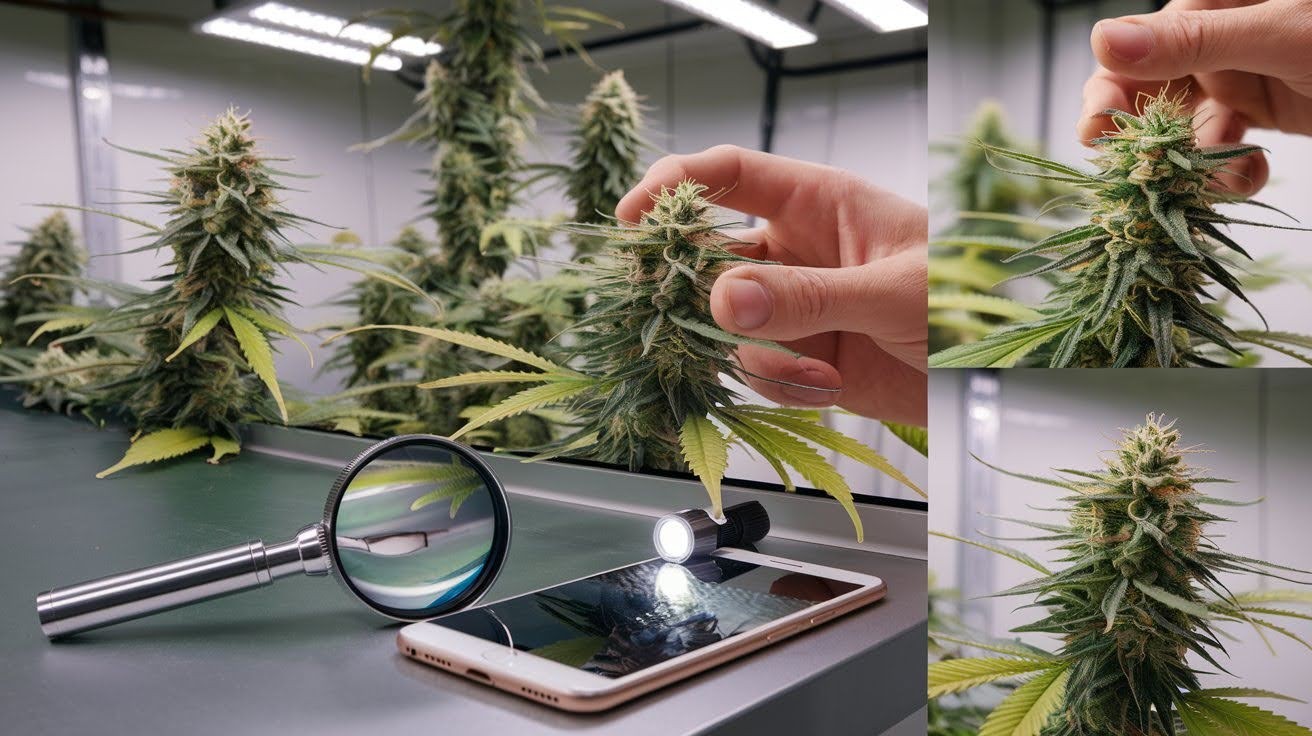
Your eyes alone aren’t enough. I always keep a magnifying glass or jeweler’s loupe handy. Those tiny pre-flowers need close inspection to be identified properly.
Your smartphone is your best friend here. Use the macro photography feature to capture detailed shots of suspected pre-flowers. Lighting matters more than you think.
Get a small LED flashlight or use your phone’s flashlight. Natural light works best, but artificial light helps during inspections. Best viewing angles:
- Look up from below the node
- Check from the side at eye level
- Get close to branch intersections
Don’t guess. Get close and confirm.
Daily Inspection Methods

Make it a routine. I check my plants every single day during weeks 3-6. This isn’t optional if you want to catch males early.
Keep a simple record. Note which plants show signs and when. A notebook or phone app works fine. Take photos daily of suspicious areas. Compare them side by side to track changes.
Set up a system:
- Check at the same time daily
- Start with the same plant each time
- Work systematically through your growth
Consistency beats perfection. Missing one day could mean missing a male.
Common Identification Challenges and Solutions
Even experienced growers face confusion when identifying plant gender, but these solutions help clarify difficult situations.
When Gender Signs Are Unclear
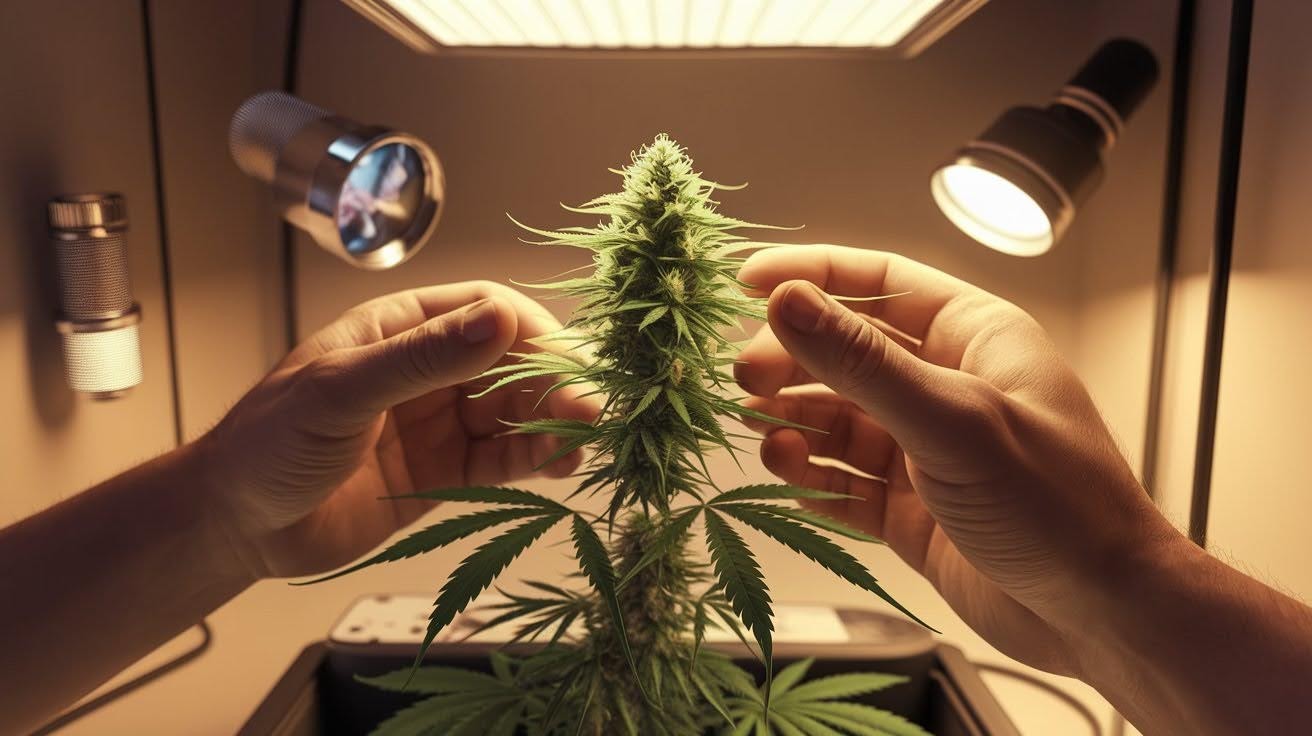
Early pre-flowers can be tricky. Sometimes those first tiny structures are too small to identify clearly. I’ve seen growers panic over what turned out to be new leaf growth.
Mixed signals happen, too. A plant might show one questionable structure while everything else looks normal. Here’s my timing rule: Wait 3-5 days maximum for clearer signs.
Don’t wait longer than that. If you’re still unsure after 5 days, treat it as suspicious and isolate the plant. Better to be cautious than risk your entire crop.
Distinguishing from Early Female Signs
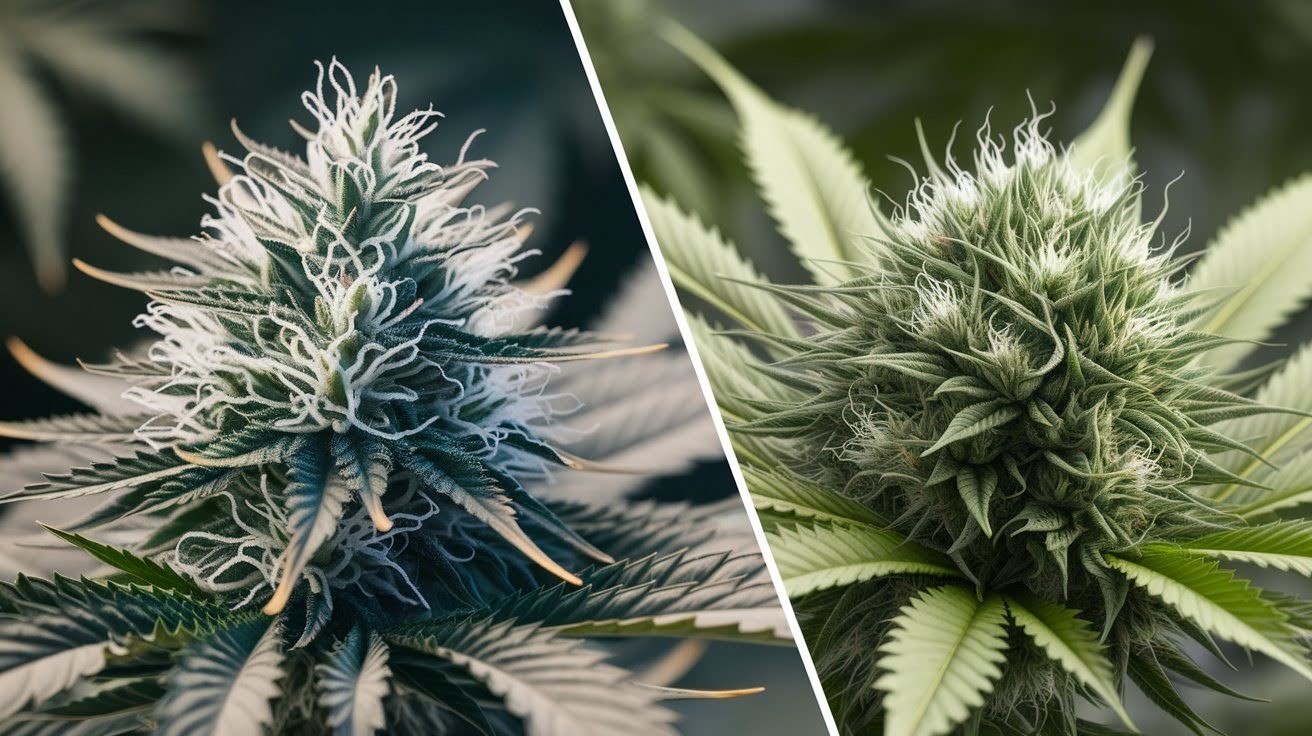
Female calyxes can fool you at first. Early female structures sometimes look round and bulbous, just like males. This catches new growers off guard.
Watch for these key differences: Female pre-flowers are pointed and teardrop-shaped. Males are perfectly round. The white pistils are your smoking gun.
Females develop white hairs within days of showing pre-flowers. Males never grow white hair. Ever. Don’t remove plants too quickly.
Give females time to show their white pistils. My rule: If it’s round with no white hairs after 3 days, it’s probably male. If it’s pointed or shows white hairs, it’s female.
Critical Mistakes to Avoid in Early Detection
These common detection errors have cost countless growers their harvests, but they’re completely preventable with proper knowledge.
Common Identification Errors
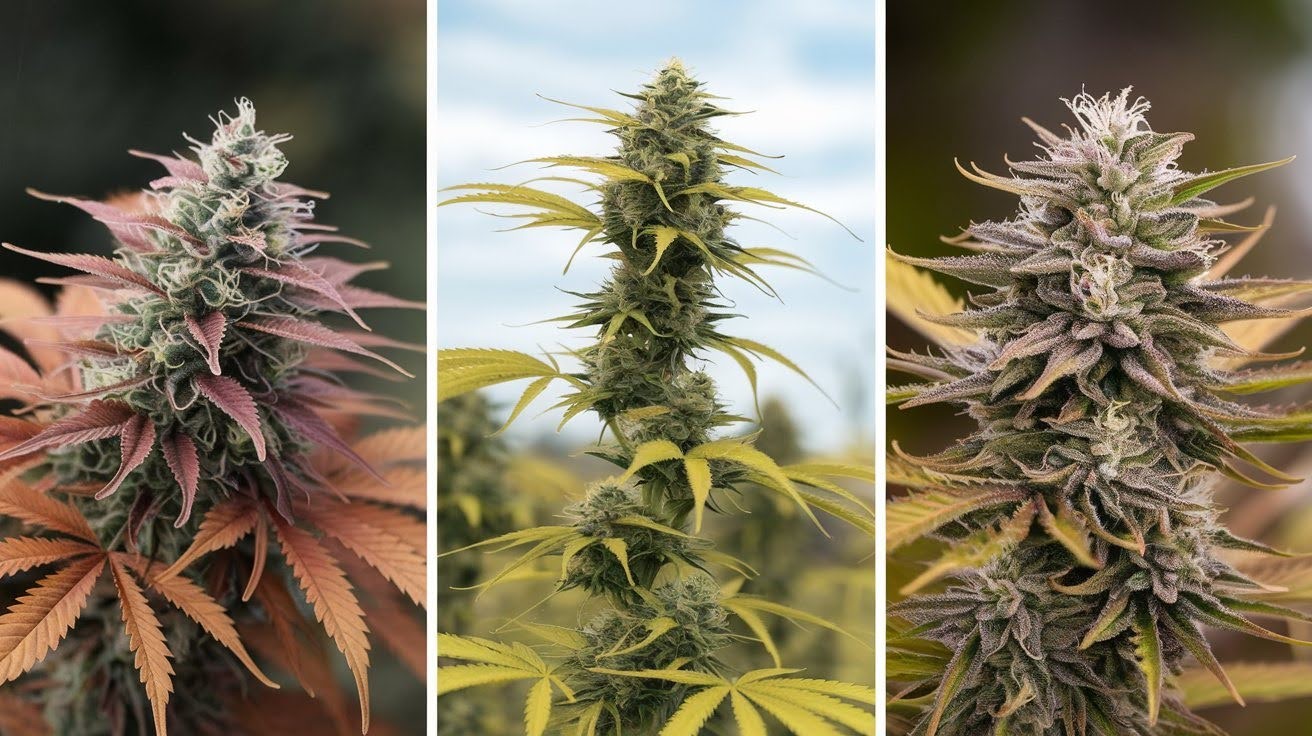
These mistakes can cost you your entire crop. I’ve seen growers confuse early female calyxes with male pre-flowers. They look similar at first, but females develop white pistils within days.
Don’t rely only on growth patterns. Tall, lanky plants aren’t always male. Check the nodes – that’s where the truth lives.
Hermaphroditic plants fool everyone. They show both male and female parts. One male flower can ruin everything, even on a mostly female plant. Waiting for “100% certainty” is dangerous. By then, pollen might already be flying.
Observation and Timing Mistakes
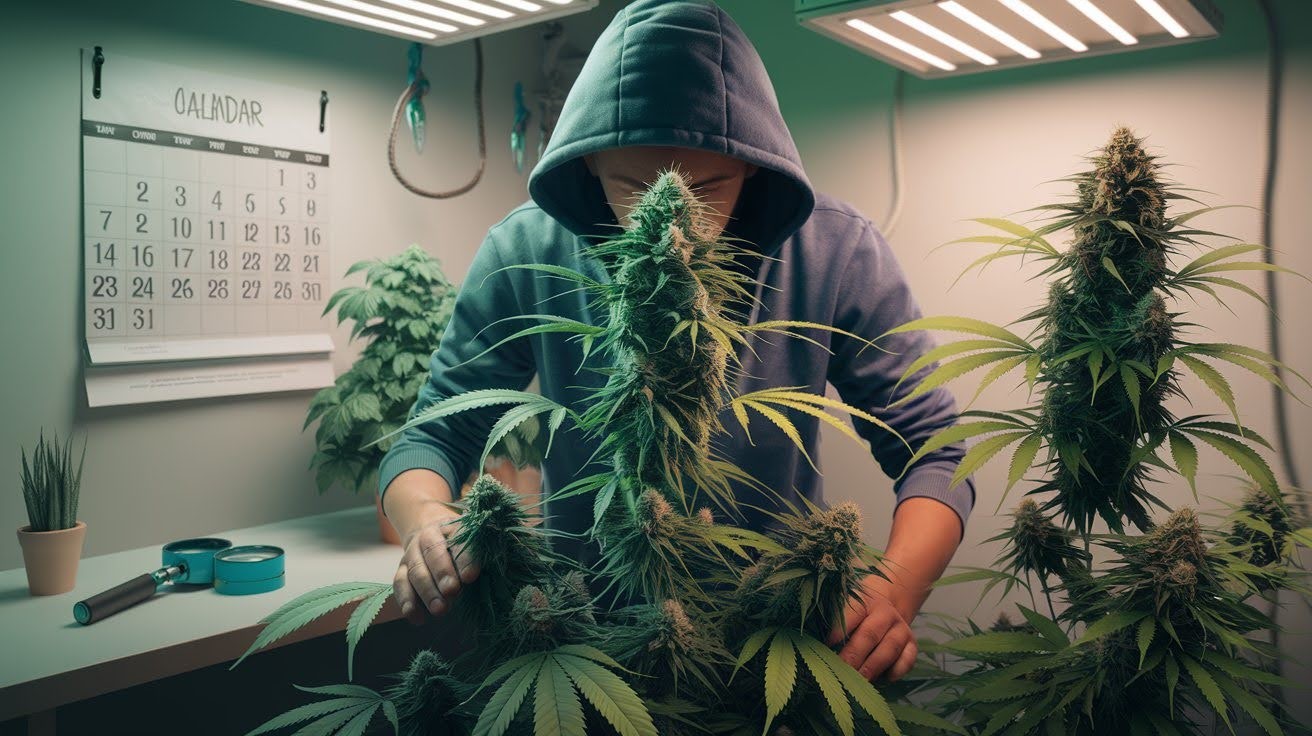
Inconsistent checking kills crops. Check daily during weeks 3-6. Missing even two days can mean missing a male.
Don’t just check obvious spots. Male flowers can appear anywhere on the plant, not just at the top. Feminized seeds aren’t foolproof. I’ve found males in feminized batches.
Always inspect every plant. Get the right tools. Squinting at tiny structures without magnification leads to mistakes.
My biggest lesson: Act on strong suspicion rather than waiting for absolute proof. A removed female is disappointing. A missed male is devastating.
Conclusion
Spotting early signs of male plants doesn’t have to be stressful anymore. You now know exactly what to look for: those small, round pre-flowers at the nodes, the absence of white pistils, and the telltale grape-cluster formations. Check your plants daily during weeks 3-6 and trust what you see.
Remember my golden rule: It’s better to remove a questionable plant than risk your entire harvest. With the right tools and consistent observation, you’ll catch males before they cause problems.
Your confidence in identifying these early signs will grow with each crop. Start applying these techniques in your next growth, and you’ll protect your females like a pro.
Found this helpful? Share your own male plant stories in the comments below – we all learn from each other’s experiences.
Frequently Asked Questions
When do the early signs of male plants first appear?
Male cannabis plants typically show early signs at 3-4 weeks from germination, appearing 7-10 days before females indoors and up to 3 weeks earlier outdoors.
What do male flowers look like?
Male pre-flowers are small, round, egg-shaped structures at nodes. They’re smooth without white hairs and resemble spades from playing cards or tiny balloons.
How can I tell the difference between male and female pre-flowers?
Males have round, bulbous pre-flowers without white hairs. Females have pointed, teardrop-shaped structures with white pistils (hairs) emerging within days.
Where should I look for early signs of male plants?
Check the nodes where branches meet the main stem, focusing on the upper parts of the plant and branch junctions. Signs may appear in just one location initially.
How long do I have to remove male plants before they pollinate?
You have 1-2 weeks from first pre-flower appearance to pollen sac maturity. Remove plants immediately when you see upright sacs with yellowish petals emerging.










